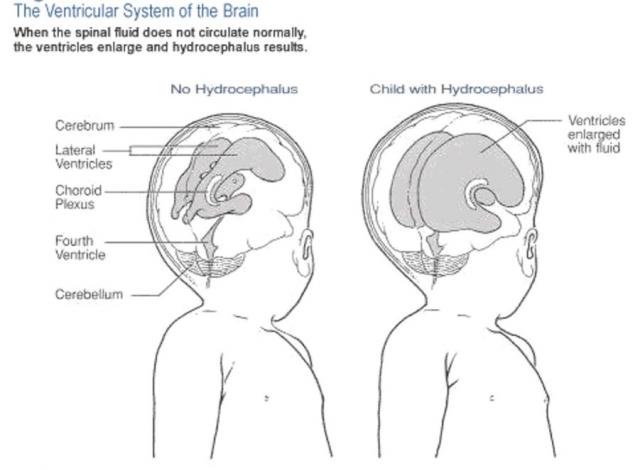| |||||||||||||||||||||||||||||||||||||||||||||||||||||||||||||||||||||||||||||||||||||||||||||
|
login
|
|
||||
What is Hydrocephalus?
Hydrocephalus, generally speaking, means an increased accumulation of fluid in the brain. This fluid is called cerebrospinal fluid, or CSF, which is produced in the ventricles of the brain and circulates through the ventricular system and is absorbed into the bloodstream. CSF is in constant circulation and has many important functions within the body. It surrounds the brain and spinal cord and acts as a protective cushion against injury. CSF contains nutrients and proteins necessary for the nourishment and normal function of the brain and carries waste products away from surrounding tissues. Hydrocephalus is the result of an imbalance between the formation and drainage of CSF. Approximately 500 milliliters (about a pint) of CSF is formed within the brain each day, by epidermal cells in structures called the choroid plexis. These cells line chambers called ventricles, that are located within the brain. There are 4 ventricles in a human brain. Once formed, CSF usually circulates among all the ventricles before it is absorbed and returned to the circulatory system. The normal adult volume of circulating CSF is 150 ml, and the CSF turn-over rate is more than 3 times per day. Because production is independant of absorption, reduced absorption causes CSF to accumulate within the ventricles. As the CSF builds up, it causes the ventricles to enlarge and the pressure inside the head to increase. This is Hydrocephalus.
|
||


